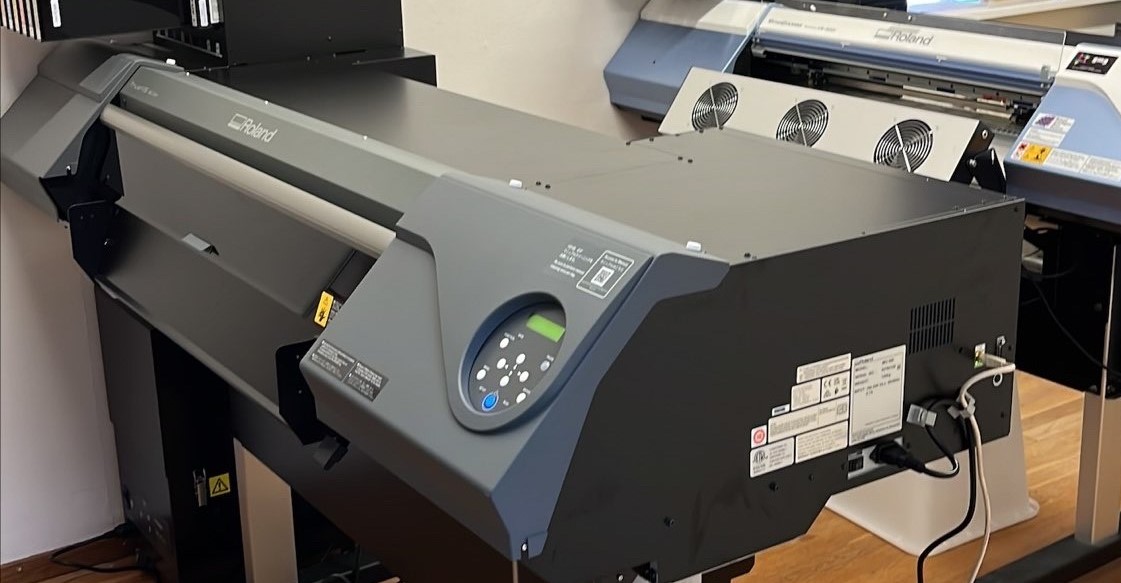
17 Oct Our new Roland printer
The many possibilities of our new Roland printer
For years, FroQ worked with four large Epson printers. When our Epson WT printer needed replacement, we started looking for a printer with even more additional features. After examining a lot of printers, we finally chose for a printer from Roland’s VersaUV LEC2 Series.
Philippe Lixon is PrePress manager at FroQ: “The starting points were clear. In any case, the new printer had to be compatible with our certified Epsons and with GMG’s Open Colour system, which we work with. But it was also the perfect time to look for a printer with additional features.”
Almost all materials
Folkert Naeff, lithographer at FroQ, thinks we have certainly succeeded: “With the new Roland printer, we can do much, much more than with the old Epson WT. We can print on almost any material with it. On metal, cardboard, (white) film. We can apply varnish to the Roland and thus show what glossy packaging or packaging with ‘spot UV’ will look like. The printer also offers more possibilities to create mock-ups.”
Philippe: “We are the first company in the Netherlands that can offer its customers all that. That opens perspectives. Currently, retailers still have to turn to their printing companies if they want to know in advance what a special packaging will look like. And such a print proof costs a lot of money. After all, you have to start everything up to be able to make one. Soon we will be able to make a ‘test’ proof for our customers very easily. ”
Getting the Roland ready for use
Folkert: “Before we replace the Epson WT with the Roland, we have to make sure that the new machine prints exactly the same colours as the old one. The new printer has already been calibrated, now we are busy fine-tuning it further. The new printer must also be compatible with the printers’ profiles. Each of those printer profiles has its own printing characteristics.”
Philippe adds: “That’s quite a job. All 200 printing profiles we come across differ from each other: different machines, printing techniques and types of ink… We are testing and adapting all that. Nice work to do, by the way. Especially because it means we can offer our customers something beautiful. Something no one else in the Netherlands can do yet! “
To be an expert in packaging you need to learn from the best.

